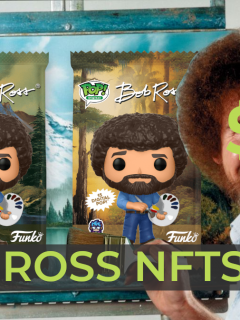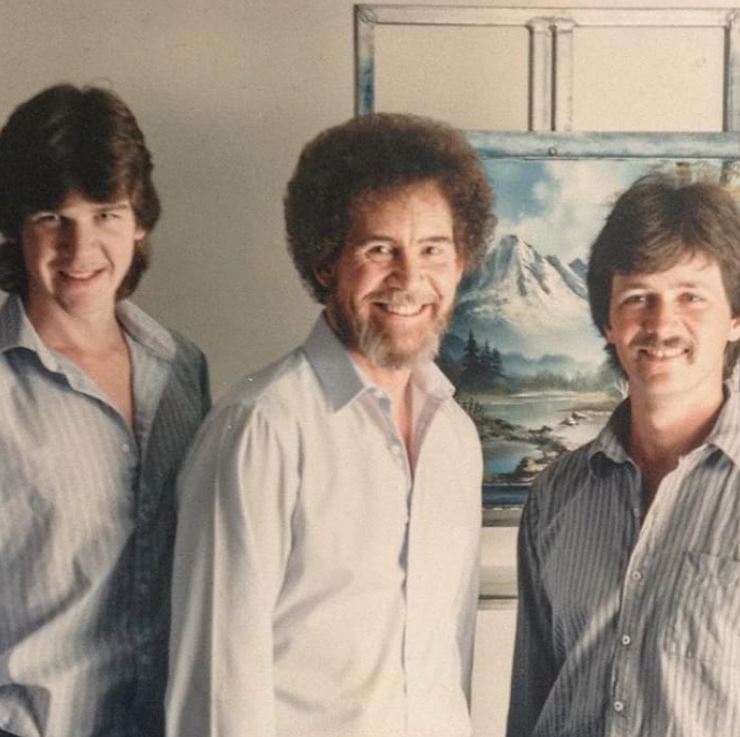Ad Reinhardt is an American abstract painter who is most famous for his huge black paintings. Not paintings in black and white, but large canvases painted in solid black oil paint.
Let’s find out why people pay several million dollars for Ad Reinhardt’s single-color paintings, but when we paint something like that, it’s “uncreative” and “a waste of canvases and paints”.
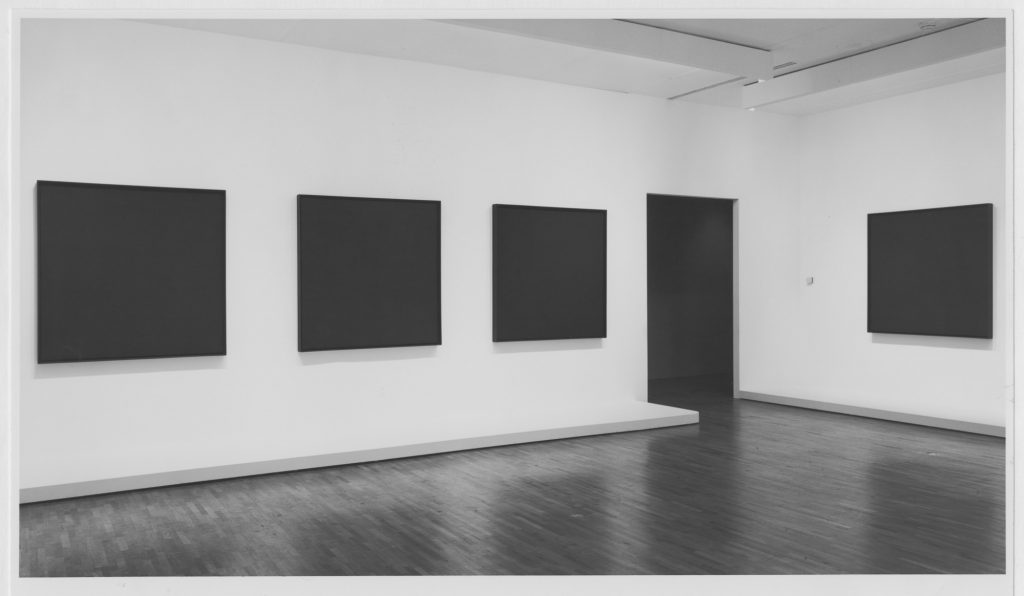
He also drew some pretty hilarious comics about the pretentiousness of modern art. So get ready for some funny drawings and a little bit of philosophy too.
Contents
Ad Reinhardt’s Most Famous Paintings
So who is that guy? Ad Reinhardt was born in 1913 and worked in New York City for most of his life. He produced abstract art right from the start and was a member of the American Abstract Artists organization.
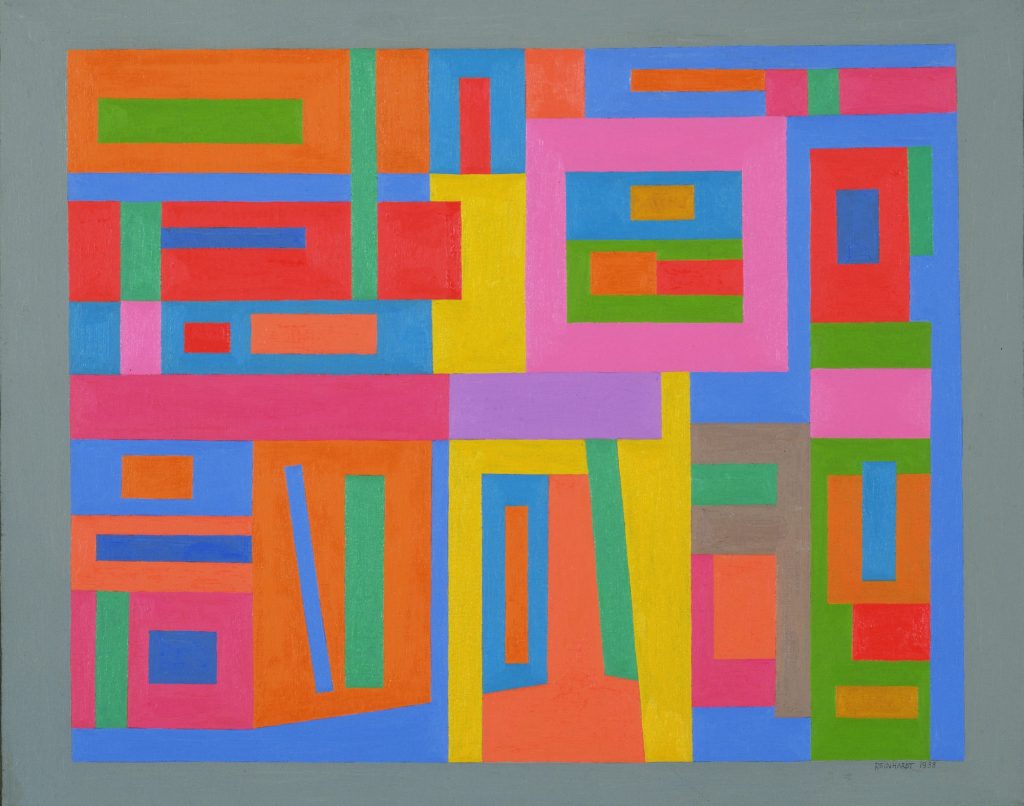
Image credit & copyright: Estate of Ad Reinhardt / Artists Rights Society (ARS), New York, New York
While his early work looks a little bit like the scribble-and-fill artwork we all produced with MS Paint on our parent’s PCs when we were children, he is most famous for his later works: big canvases filled with blocks of almost the same color.
The Black Paintings of Ad Reinhardt
Yup – the paintings you see below are Reinhardt’s most famous work. 60’’ by 60’’ canvases painted entirely in black. He painted multiple paintings in this style – and people are paying millions of dollars for them.
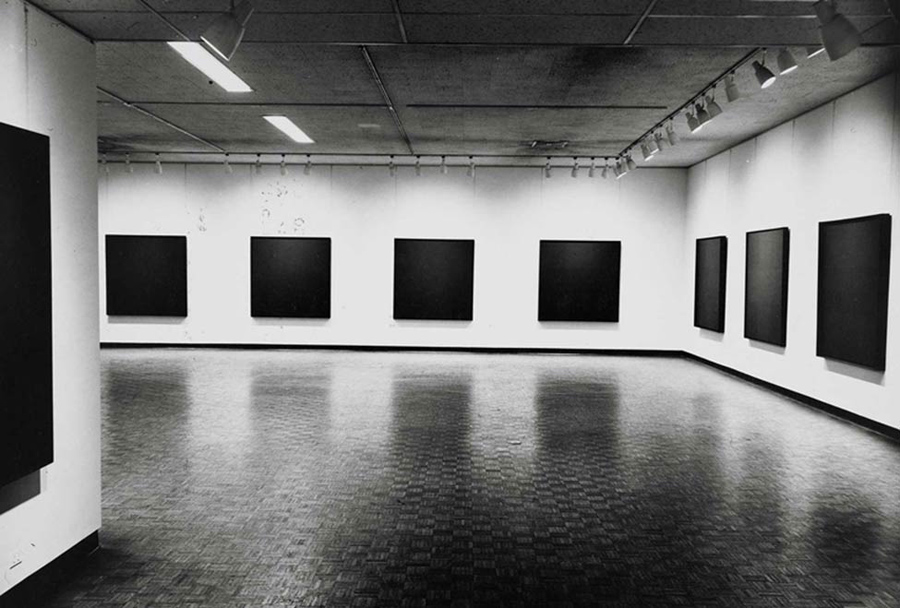
Ad Reinhardt’s paintings regularly yield prices between two to three million US dollars. For single color black squares.
If you think that this is one of the most pretentious things you have ever heard, or that Ad Reinhardt found an easy way to make money from stuck-up art collectors by selling them black squares you are not alone.
I was thinking the same thing. Until I managed to see one in person in New York’s Museum of Modern Art (MoMA) and read up on Ad’s thoughts behind the painting and his stance on modern art in general. I have loved these black squares ever since.
Keep reading to find out what’s the reason for the artist’s big success with these black paintings. Who knows, maybe you’ll end up falling in love too. For me, these are some of the most exciting paintings with the most boring descriptions of all time.
These Paintings Are Not Black
Yes, you read that right. Before we get deeper into Ad’s intention with these paintings let’s take a look at how he painted them and why his series of “Untitled Black Paintings” are in fact not black at all.
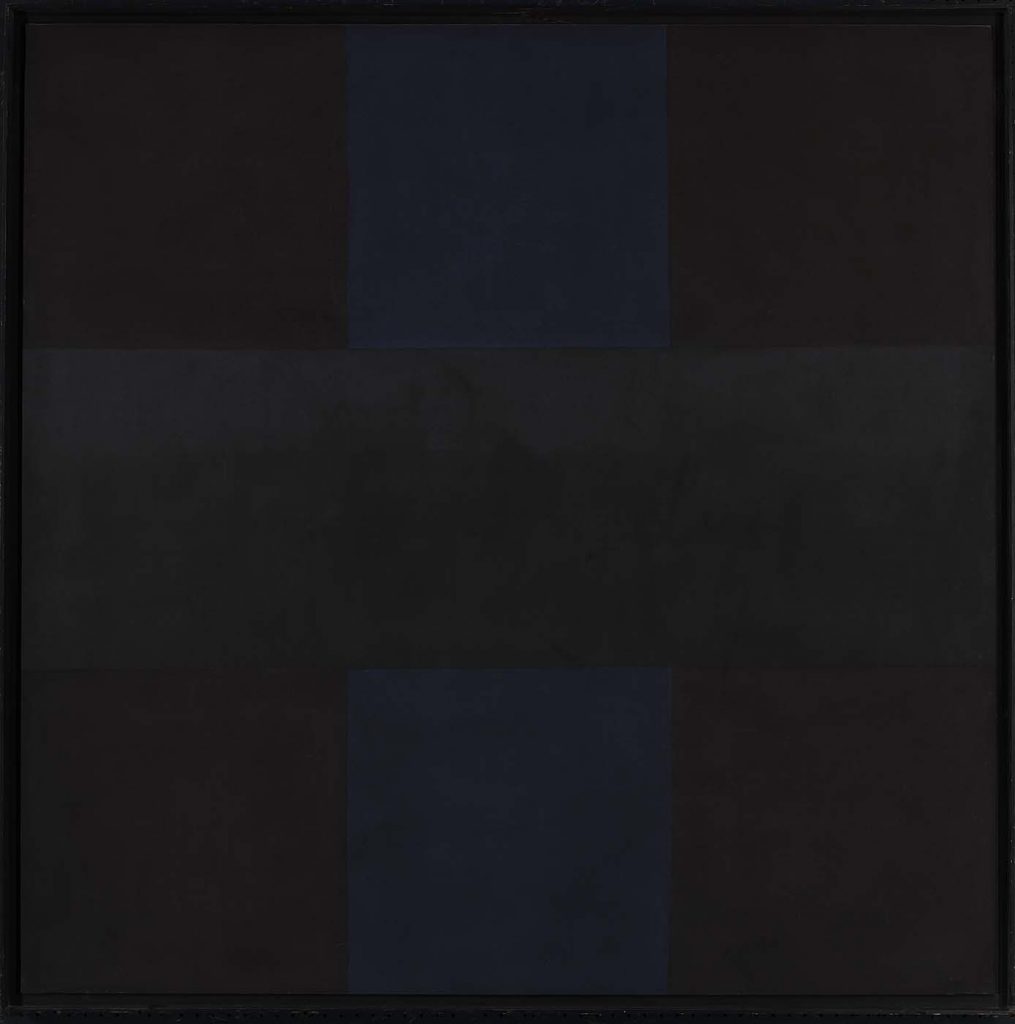
When you first step into a room with one of the black paintings you can’t help yourself but wonder: “why is there a huge black canvas hanging on the wall. How the hell is that art?”.
After spending a few moments in front of the paintings they start to reveal their secret: These all-black paintings are not black. For these artworks, the old saying rings true: “Art is in the eye of the beholder”. Literally.
It’s all about the so-called cone cells in our eyes. These cells are responsible for seeing colors. And just like our eyes have to get used to different levels of light, they can also adapt to different levels of colors.
Ever noticed how everything looks greenish after exiting a room with a lot of red lights? That’s exactly the effect I’m talking about!
Forcing A Pause To See The Beauty
Once you allow your eyes to adapt to the black painting you’ll start to notice one thing. Ad Reinhardt did not paint his canvases in a solid block of one color. And he didn’t even paint them black at all!
These paintings are actually made up of several smaller squares of almost nightmarishly dark shades of red, blue, and green. So dark that they look black if you don’t take your time to allow yourself to see them.
But once you do they start to emit an almost uncanny beauty. These matte dark surfaces show you their true colors only when the light moves across them at just the right angle. Like the darkest of blue skies before it gets pitch black at night.
And while looking at these artworks you start to realize one thing. Once you look away, that beauty is gone. You can’t take a look back across your should for a quick glance at the painting before heading to the next room. If you want to see it again you have to work for it.
I have to admit, this experience also forced me to ask myself: “Was I too fast in judging these paintings? What would I see if I took the same time with other paintings in this museum? Should I slow down and ditch the rest of my plans for the day and stay here longer?”
I didn’t though. Since I was only in New York City for a very short time I decided to fill my time with hot dog carts and huge ads on Times Square.
Painting The Ultimate Paintings
Ad Reinhardt considered these black squares the “last paintings” that anyone could ever paint. What exactly he means by that isn’t that clear to me, but another interpretation of these untitled works is clearer.
Reinhardt wants his paintings to ask if there can ever be absolutes. We first think the colors we see on the canvas are the purest form of color, the darkest of blacks. Only after spending some time with them do we see the real truth.
Here’s how Ad painted his non-black Black paintings: He mixed a little bit of red, green, or blue paint with a whole load of black oil paint and even more turpentine. He then let this thin mix of paint and solvent sit for a few weeks.
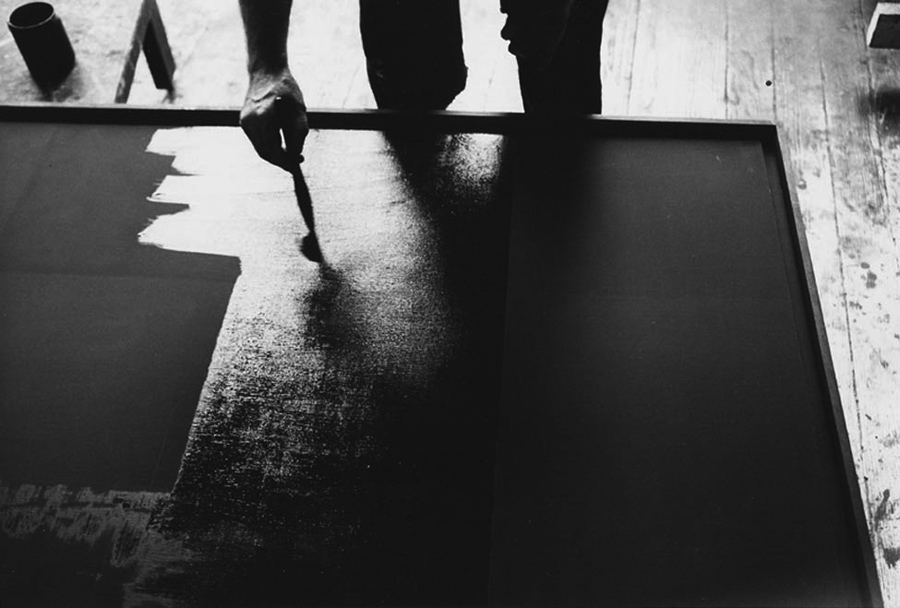
Image credit & copyright: Estate of Ad Reinhardt / Artists Rights Society (ARS), New York, New York
The pigment in the paint sinks down after a while. This separates the turpentine (also known as paint thinner) from the pigment. After pouring off the turpentine he was left with an extremely dark shade of color in the form of very thick oil paint.
The almost absolute lack of painting medium (the part that makes the paint runny and wet) creates a very matte variation of paint. The result can be seen in his black paintings: super dark and matte paints that only show their colors when you’re standing right in front of them.
Art As Art – Ad Reinhardt’s Philosophy
I don’t know about you, but when I hear that someone paid a few million bucks for a piece of abstract art I feel like they didn’t really buy the painting itself. They bought the idea behind the painting.
And Ad Reinhardt certainly had very strong ideas about art and what it means to be an artist. The former teacher published books and articles about what he considered “pure art”. He also coined 12 rules on how to achieve that pureness.
Abstract Expressionism
If you’re expecting a detailed explanation of what is considered “Abstract Expressionism” and what exactly differentiates this art movement from “Abstract Impressionism” or “normal” Expressionism – I’m sorry. There’s no such expressionism
The truth is, art historians use “Abstract Expressionism” as a catch-all term for a lot of painters working in New York City in the 1940s. Examples besides Ad Reinhardt are Jackson Pollock, Mark Rothko, Barnett Newman, and Agnes Martin.
What we can say is that Abstract Expressionism combines the most important aspects of “abstract” paintings and “traditional” expressionism.
Expressionism is known for its raw emotional intensity, even distorting the world and its subjects to create desired effects. And if the only emotion it creates in you is a fit of deep anger on how someone could pay several million dollars for a painting of nothing – well, I’d say that’s a pretty intense emotion too.
Ad Reinhardt’s View On Modern Art
He had strong views on the art scene of his time and how the public experienced art. Reinhardt shared a lot of his views in a series of comic strips for PM magazine called “How to Look at Art”.
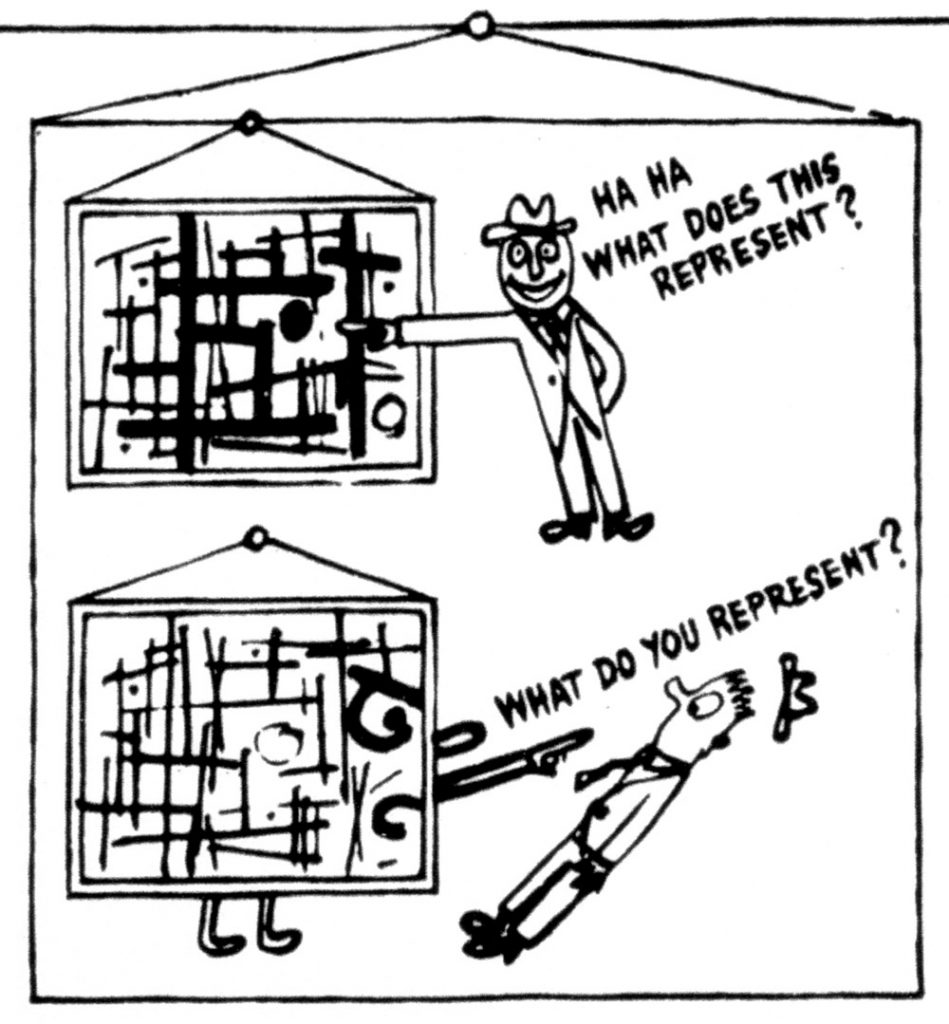
Filled with mordant humor these comic strips are mini-lessons in art history that are still relevant today. They are definitely an interesting view on art through the eyes of an accomplished artist himself. You can view all of his comics and illustrations on the website of the Ad Reinhardt Foundation.
Reinhard also illustrated child’s books and several other publications. He also illustrated a highly controversial pamphlet for the Army. First intended for distribution in the armed forces “Races of Mankind” ended up being banned. Of course, it sold almost a million copies after the ban. Who would have expected that?
The Twelve Technical Rules of Ad Reinhardt
As I said, Ad Reinhardt worked as a teacher. And what do teachers love more than anything? Rules of course!
To guide his fellow artists to create what he considered “pure art” Reinhardt published the following twelve rules. Or rather twelve things you shouldn’t do. (Number 7 will shock you!)
1. No texture
Texture is naturalistic or mechanical and is a vulgar quality, especially pigment texture or impasto. Palette-knifing, canvas-stabbing, paint-scumbling, and other action techniques are unintelligent and to be avoided. No accidents or automatism.
2. No brushwork or calligraphy
Hand-writing, hand-working, and hand-jerking are personal and in poor taste. No signature or trade-marking. “Brushwork should be invisible.” “One should never let the influence of evil demons gain control of the brush.”
3. No sketching or drawing
Everything, where to begin and where to end, should be worked out in the mind beforehand. “In painting, the idea should exist in the mind before the brush is taken up.” No line or outline. “Madmen see outlines and therefore they draw them.” A line is a figure, a “square is a face.” No shading or streaking.
4. No forms
“The finest has no shape.” No figure or fore- or background. No volume or mass, no cylinder, sphere or cone, or cube or boogie-woogie. No push or pull. “No shape or substance.”
5. No design
“Design is everywhere.”
6. No colors
“Color blinds.” “Colors are an aspect of appearance and so only of the surface,” and are “a distracting embellishment.” Colors are barbaric, unstable, suggest life, “cannot be completely controlled” and “should be concealed.” No white. “White is a color and all colors.” White is “antiseptic and not artistic, appropriate and pleasing for kitchen fixtures, and hardly the medium for expressing truth and beauty.” White on white is “a transition from pigment to light” and “a screen for the projection of light” and “moving” pictures.
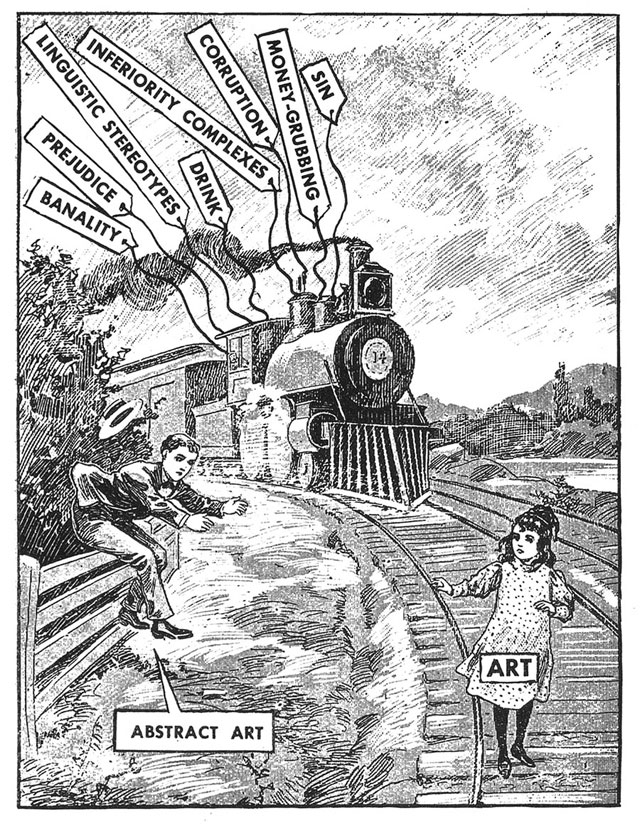
Image credit & copyright: Estate of Ad Reinhardt / Artists Rights Society (ARS), New York, New York
7. No light
No bright or direct light in or over the painting. Dim, late afternoon, non-reflecting twilight is best outside. No chiaroscuro, “the maldorant reality of craftsmen, beggars, topers with rags and wrinkles.”
8. No space
Space should be empty, should not project, and should not be flat. “The painting should be behind the picture frame.” The frame should isolate and protect the painting from its surroundings. Space divisions within the painting should not be seen.
9. No time
“Clock-time or man’s time is inconsequential.” “There is no ancient or modern, no past or future in art. A work of art is always present.” The present is the future of the past, not the past of the future.
10. No size or scale
Breadth and depth of thought and feeling in art have no relation to physical size. Large sizes are aggressive, positivist, intemperate, venal, and graceless.
11. No movement.
“Everything is on the move. Art should be still.”
12. No object, no subject, no matter
No symbols, images, or signs. Neither pleasure nor pain. No mindless working or mindless non-working.
The full article containing his rules can be read here.
Header Image credit & copyright: Estate of Ad Reinhardt / Artists Rights Society (ARS), New York, New York

